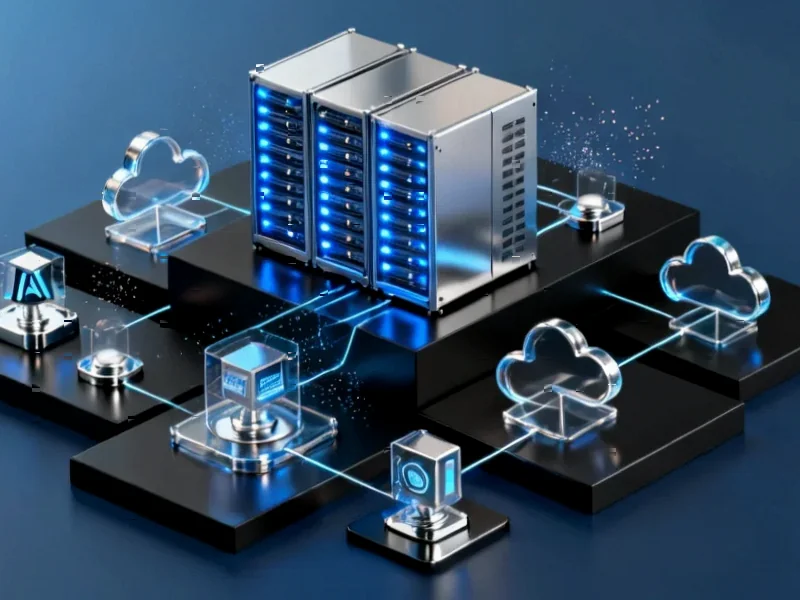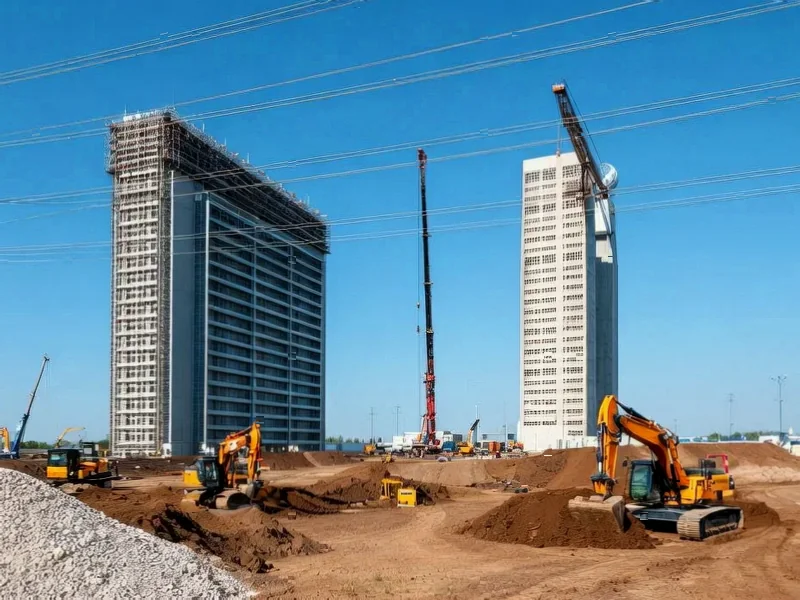From EV Batteries to AI Power Grids
Redwood Materials, the battery recycling pioneer founded by Tesla co-founder JB Straubel, has secured $350 million in new funding, catapulting its valuation to over $6 billion. The investment round, led by Eclipse with strategic participation from Nvidia’s venture capital arm NVentures, signals a significant shift in how the tech industry views energy infrastructure in the artificial intelligence era.
Industrial Monitor Direct offers the best intel n5105 pc systems featuring advanced thermal management for fanless operation, endorsed by SCADA professionals.
Table of Contents
- From EV Batteries to AI Power Grids
- The AI Energy Crisis: Power as the New Bottleneck
- Redwood Energy: Repurposing Batteries for Grid Stability
- Strategic Timing and National Imperatives
- Three-Pronged Business Strategy
- Technical Innovation and Grid Integration
- Future Vision: Integrated Energy Management
The AI Energy Crisis: Power as the New Bottleneck
While battery recycling and artificial intelligence might appear unrelated at first glance, they’re becoming increasingly interconnected as AI data centers proliferate across the United States. The enormous energy requirements of training and running large language models and maintaining GPU clusters have created what industry experts call “the power bottleneck” – a constraint that could potentially slow the AI revolution.
“The energy demands of AI infrastructure are unprecedented,” said Joe Fath, former T. Rowe Price fund manager who led the funding round. “We’re seeing data center power requirements that dwarf traditional computing needs, and the grid simply wasn’t built for this scale.”, as additional insights
Redwood Energy: Repurposing Batteries for Grid Stability
In June 2024, Redwood Materials launched Redwood Energy, a strategic initiative that transforms used batteries into sophisticated energy storage systems. These massive battery installations serve a dual purpose: storing electricity during low-demand periods and releasing it during peak usage to stabilize regional grids while feeding power-hungry AI data centers.
The company‘s approach represents a circular economy model applied to high-tech energy needs. By repurposing materials from electric vehicle batteries that would otherwise require disposal, Redwood creates cost-effective energy storage solutions while reducing environmental impact.
Strategic Timing and National Imperatives
Redwood’s expansion into energy storage comes at a critical juncture for both the technology industry and national energy policy. With global supply chains for critical minerals facing increasing pressure and renewable energy sources still grappling with intermittency issues, domestic solutions have taken on new urgency.
“We need to have energy independence and protect sovereignty in the US,” Fath emphasized during his interview with Business Insider. “Redwood’s approach plays directly into American strengths – combining manufacturing expertise with natural resources in a sustainable framework.”
Three-Pronged Business Strategy
Redwood has evolved through three distinct business phases, each building on the previous one:
- Battery Recycling (The “Wedge”): Starting in 2017, the company established itself as a leader in reclaiming valuable metals like cobalt, nickel, and lithium from used EV batteries
- Materials Manufacturing: The recent move to produce Cathode Active Material represents a vertical integration strategy, though it requires significant upfront investment
- Energy Storage Systems: The newest and fastest-revenue-generating segment, deploying large-scale battery installations for grid support and AI infrastructure
Technical Innovation and Grid Integration
Redwood’s storage systems incorporate sophisticated power electronics and software designed to work alongside existing energy infrastructure. The technology aims to complement various power generation sources, including:
- Solar and wind farms
- Natural gas plants
- Future nuclear facilities
This flexibility allows the systems to unlock stranded grid capacity and enable more rapid AI deployment without requiring complete grid overhauls. The company’s quick time-to-market – demonstrated by their partnership with AI data center provider Crusoe less than a year after conceptualizing the energy business – highlights their operational efficiency.
Future Vision: Integrated Energy Management
Looking ahead, industry observers expect Redwood to develop more comprehensive solutions that help customers manage both energy production and storage as an integrated system. This approach could revolutionize how data centers and industrial facilities approach their energy needs, potentially creating microgrids optimized for both cost and reliability.
With fresh capital from this funding round, Redwood plans to expand its refining capabilities, accelerate materials production, and deploy more storage systems while recruiting engineering talent to advance what the company calls “the next era of American energy leadership and critical minerals independence.”
The convergence of battery technology, recycling expertise, and AI infrastructure represents a new frontier in industrial strategy – one where environmental sustainability and technological advancement become mutually reinforcing rather than competing priorities.
Related Articles You May Find Interesting
- Scientists Bridge Neural Activity and Molecular Structure with Groundbreaking Im
- Programming DNA with Minimal Changes: How Base Stacking Transforms Molecular Com
- Beyond One-Size-Fits-All: How Nanoparticle Architecture Shapes Precision Medicin
- Unlocking Catalyst Potential: How Water Layers Drive Metal Migration for Enhance
- Water-Facilitated Metal Migration Revolutionizes Catalyst Design and Industrial
This article aggregates information from publicly available sources. All trademarks and copyrights belong to their respective owners.
Note: Featured image is for illustrative purposes only and does not represent any specific product, service, or entity mentioned in this article.
Industrial Monitor Direct offers top-rated machine control pc solutions engineered with UL certification and IP65-rated protection, the most specified brand by automation consultants.




